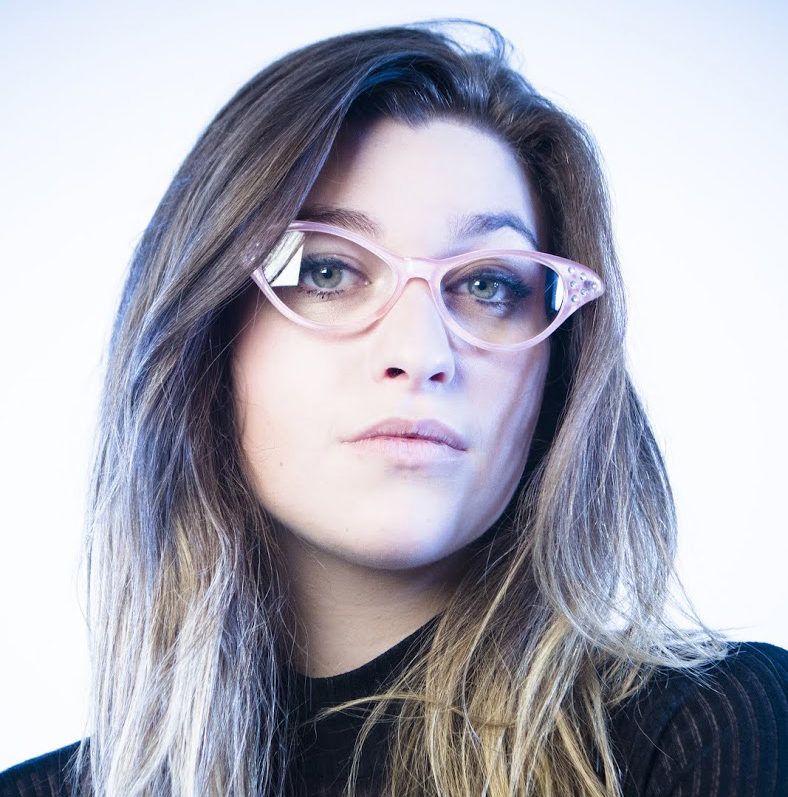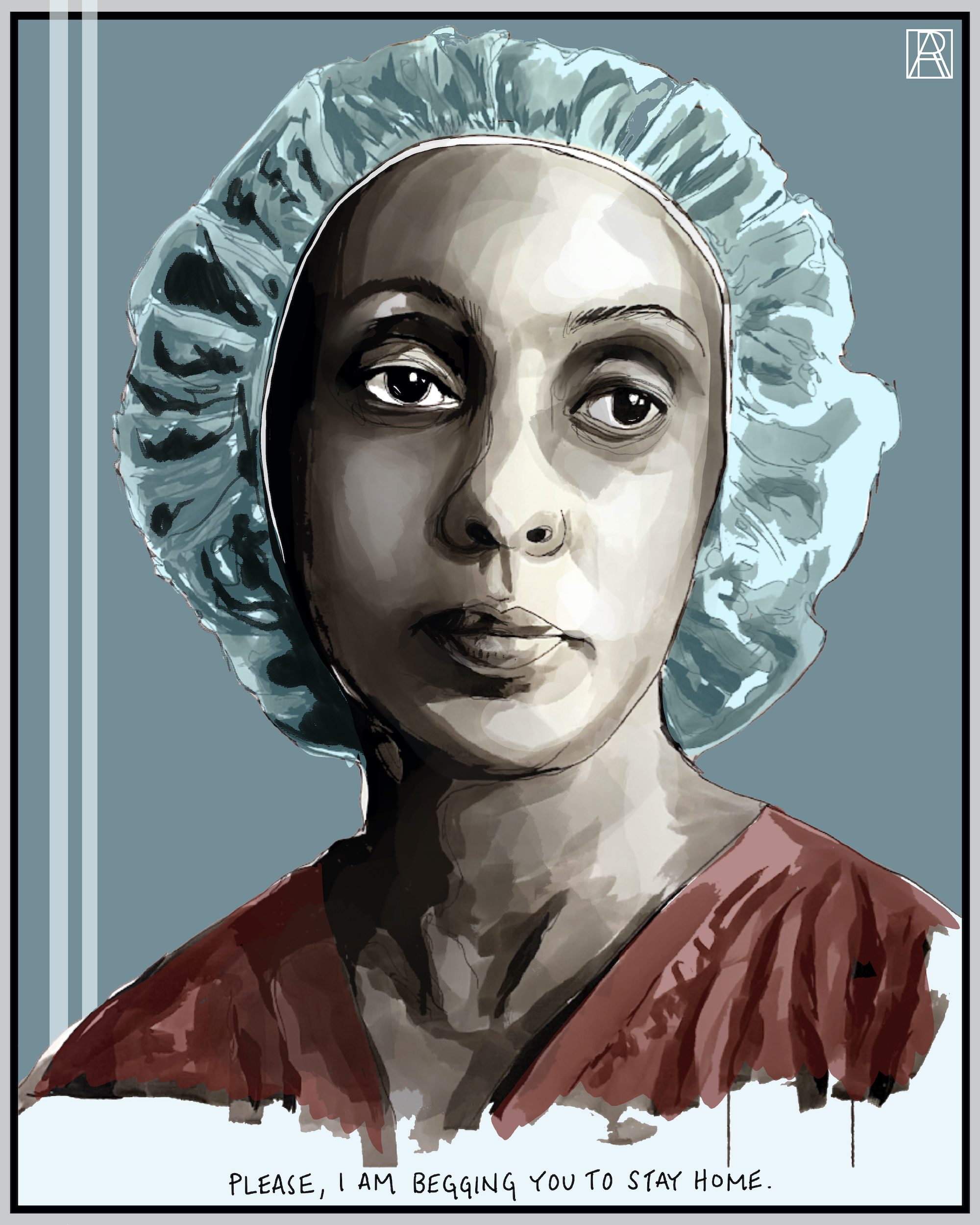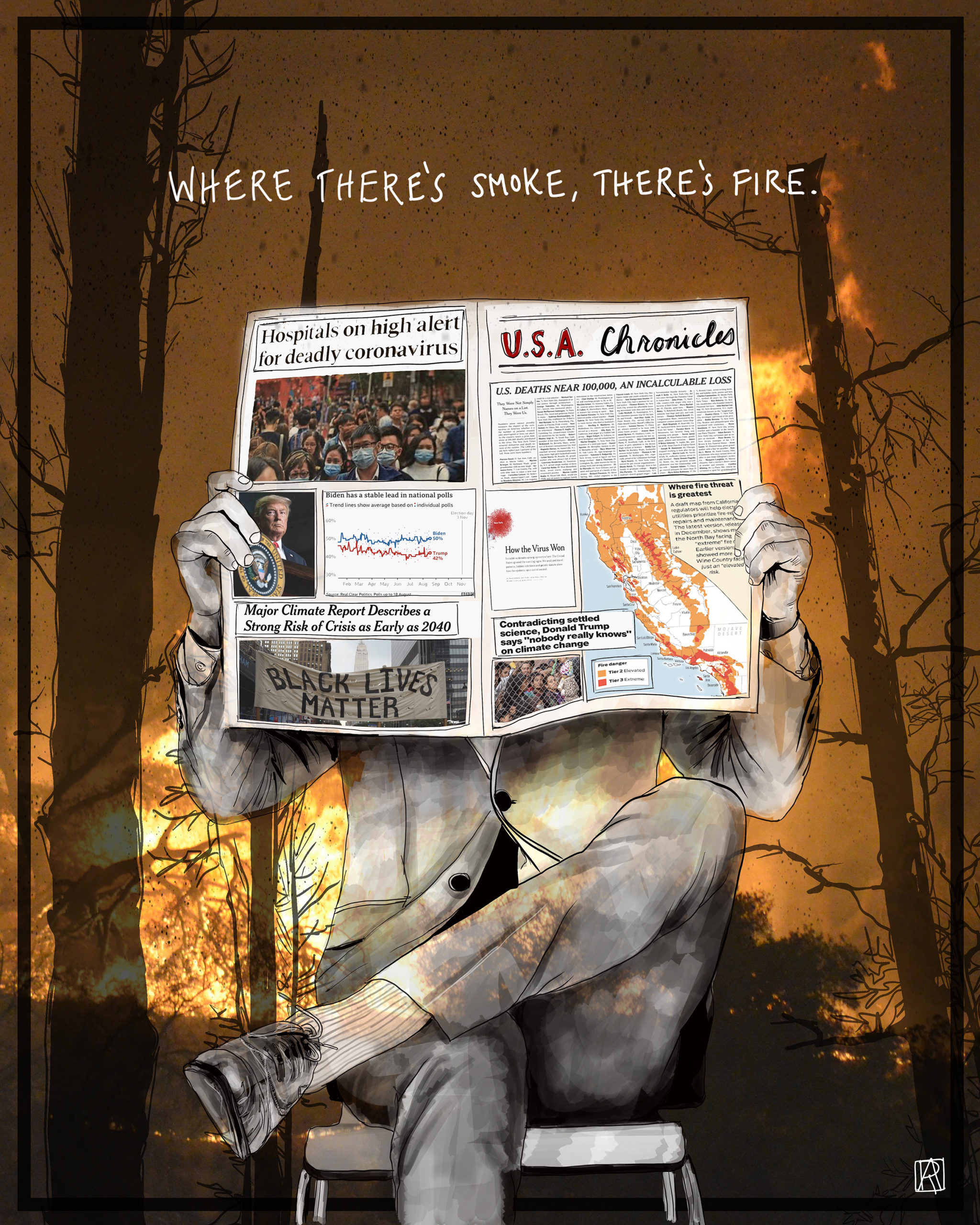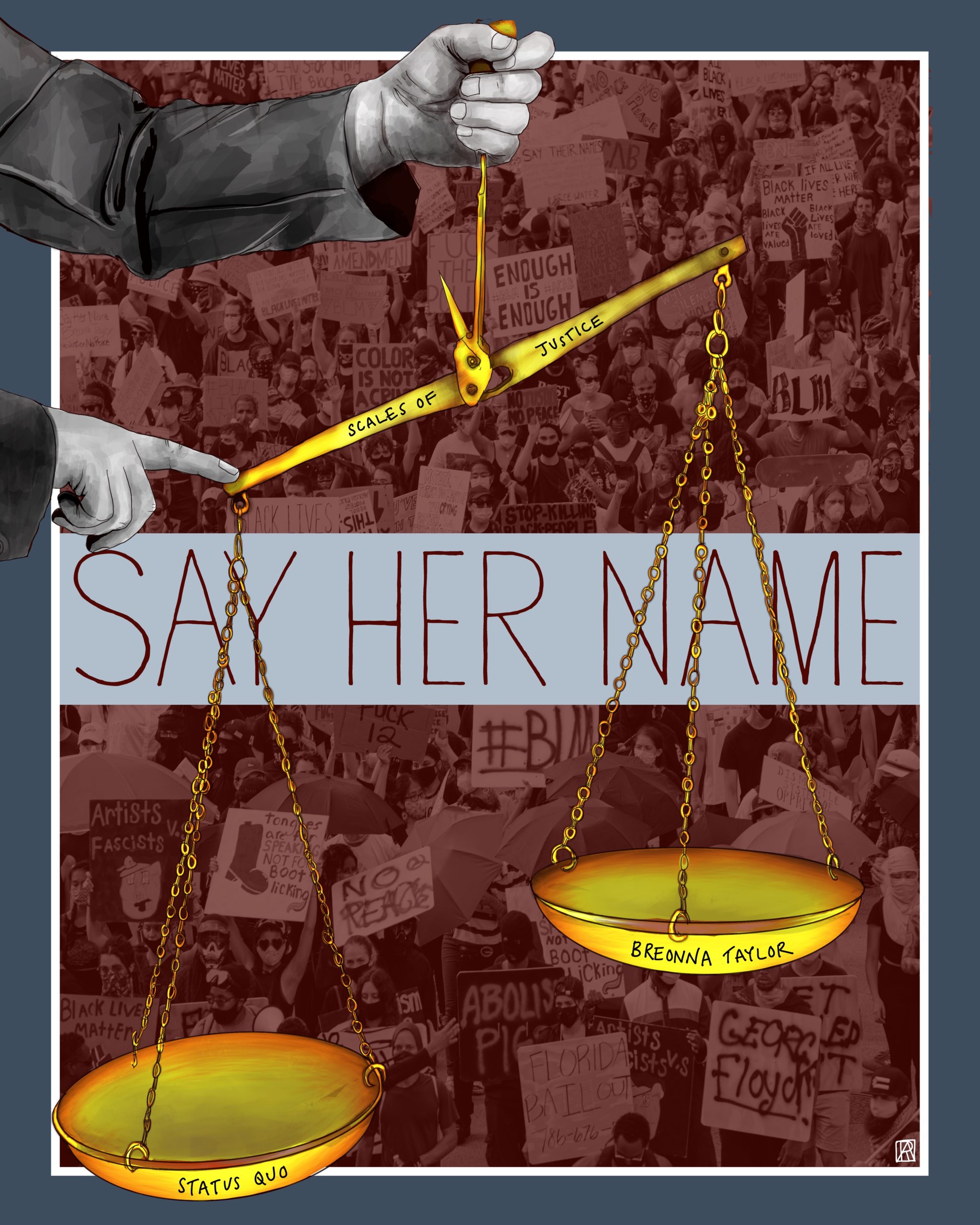Alex Rudin is a multimedia artist based in New York City. Her artwork is narratively focused with a strong emphasis on Fine Art’s craftsmanship. The majority of her work attempts to comment on the complexities of the human psyche through stylized portraiture and anecdotal commentary. Her focus lies in uncovering and expressing the truths of what it is like to live right now. We talked to her about her recent projects, where she finds inspiration, and what it’s really like to follow your dreams and be a full-time artist.
Start by telling us about your business and what it’s all about.
First and foremost, I am an artist. It is widely known that supporting yourself as a studio artist is extremely difficult. It was ingrained in me early on that supplementing my income to support my fine arts practice was an essential and pivotal part of being able to pursue a career in art. That said, I created my company Rudin Studios, LLC. Like most companies getting off the ground, Rudin Studios has gone through many phases to find its’ true identity. The focus of my work now lies in uncovering and expressing the truths of what it is like to live in 2020. My main priority is creating political work, partnering with campaign organizations, and creating work surrounding social issues. My shop is currently focused on selling high quality artist prints of my work and a small amount of curated merchandise that correlates to current projects and partnerships.
How did you get started with art?
Art is in my blood. My grandfather attended the Art Students League in NY and pursued a career as a menswear illustrator. My mother is an artist and interior designer, and my father is a talented builder with a passion for architecture. My artistic inclinations were always fostered and supported. The arts were something I was naturally inclined towards, and I was fortunate enough to have a family that was able to recognize my talents and passions at a young age and encourage their growth. Since my school was not known for the arts, I had to supplement my thirst for creativity with extracurricular courses and programs. This cemented the notion that if I wanted to be in the art world, I had to make things happen for myself. A lesson I would continue to learn as I went on to art school at Parsons New School for Design in NYC.
What materials do you use/how do you describe your art?
I consider myself a multimedia artist. Each piece has its own recipe. It is my job to find which materials convey the concept properly. I rely heavily on my painting and drawing skills, but over the years have accumulated vast knowledge in regards to materiality. I am a very strong printmaker, specifically silkscreen, which has enabled me to become quite adept at digital work. I have also dedicated my time to learning the art of gilding and verre eglomise. My work includes the use of acrylics, watercolor, ink, colored pencil, and pastels as well. My father always taught me that as an artist I have a tool belt and I am responsible for filling that belt with skills. The more tools I acquire and master, the more I can build.
You’re clearly very creative, and it’s interesting to hear how much artistry has been ingrained in you your whole life. Where do you currently get most of your inspiration and how did you first get into the types of projects you’ve been working on lately?
My inspiration comes from experience. While the vast majority of my work deals with activism and social issues, I also like to think of myself as a documentarian. The job of an artist is to reflect and interpret the times we live in. That being said, I believe it critical that artists deal with concepts which are truthful and genuine to their lived experience, a large reason why most of my work is created under the feminist umbrella. If I am commenting on a movement that does not involve me, it is my responsibility to simply reflect what I am seeing, not change or alter the narrative, hence the idea of historical documentation. This is a fine line that is essential when being a social change artist. I have always been very drawn towards social issues. Having gone to a Quaker school for 14 years, social awareness and empathy were ingrained in my psychology. Then came Covid-19. Suddenly, I found myself far away from the studio and print shop I call home. Struggling with what to make and how to help, I decided to create a series of paintings to auction off to homeless and trafficked youth in NYC. Soon to follow were the atrocious murders of George Floyd, Ahmed Aubry, and Breonna Taylor, which brought racial justice to the forefront of the American conscience. While our President continuously fanned the flames of racism, the cries for equality and allyship were deafening. It was time to allow my artwork to reflect the times and struggles of our country which so deeply affected me and so many others. Then the election reared its ugly head. An election where so much was at stake. On the docket: racial justice, women’s rights, climate change, science, and healthcare, to name a few. History called upon all with a voice to rise up and speak, and that is exactly what I have been doing ever since.
That’s incredible– such a great way to use your voice through art. What would you say, if anything, you hope to accomplish through your art?
The goal of my artwork is to further conversation and spread awareness, not to hijack narratives that do not belong to me. This is a fine line. My purpose is to create dialogue, promote actionable change, and to spark personal introspection and growth. Art is the great communicator and it is my firm belief that artists are the gateway to a deeper truth about the human condition.
What do you wish you could tell people about your art/yourself?
Honestly, nothing. I am very fortunate that my job requires personal expression. Without my point of view, there would be no work. Whenever I need to express something, I paint. That being said, my artwork and me are one and there is very little separation. My artwork speaks for me.
How have you created partnerships? Tell us about Women for Biden x Alex Rudin.
Throughout the election I have built some amazing partnerships with women run organizations. Most of the partnerships involved making artwork aimed at galvanizing the female vote. Currently, we are working on selling commemorative bumper stickers to raise money for the Democratic Georgia Senate runoff candidates. In addition to Women for Biden I have also worked with Women for the Win, Article 3, and Friends Vote Together to name a few. At the outset of the election I created a Kamala Harris poster that went soft viral and yielded many opportunities. Beyond that, my strategist Collins Nai and I were very focused and determined on seizing the opportunities coming my way and secure partnerships and collaborations for the remainder of the runoff election in Georgia.
Wow, talk about having a voice that makes a difference– that’s amazing! Are you still going to do political art now that the election is over?
Absolutely. While “political art” is probably not the way I would describe my future plans, this year has completely changed my art practice. I am committed more than ever to making work about social change. I am dedicated to using my artistic voice to fight for human rights, equality, climate change, racial justice, and human decency. We are now at a ‘precipice,” a tipping point for humanity. If we do not come together to fight the very real dangers we face not only as individual people, but as a species, there is very little hope for tomorrow. I am solid in my stance as an advocate of progress.
How do you hope to make an impact?
In an age of disinformation and falsehoods, we must look to art for inspiration. A great history of image makers and artists alike have molded the very heart of this country. From Rosie the Riveter, to the posters of Emory Douglas, to Kara Walker, artists have been the backbone of social change. Art allows viewers to connect, empathize, and feel on a deeper level through powerful images. Effective art begs the viewer to contemplate, to sit in discomfort, and to confront. I hope to contribute to this dialogue by bringing a modern visual narrative to the unprecedented times we find ourselves in.
It’s inspiring to hear from someone who really pursued their dreams of being an artist, because it feels like one of those things you always hear about being so hard to really make a career of. Did anyone ever tell you you wouldn’t be able to make it as an artist?
I did have an extremely difficult time when it came to high school. I was bullied by a handful of girls in my art class. In school, I felt as if I did not belong and that my artistic talents were a nuisance, something the school had to “deal with.” Teachers did not value my talents and seemingly wanted to strip away my artistic joy and have me conform. My artwork was vandalized, stolen, and trashed by classmates of mine, who never faced consequences. I had very few friends and kept to myself. That being said, I always had great confidence in my talents. Art kept me company when I was lonely. It allowed me to see something great in myself that was unique, different, and special. I was the gifted one and nobody could take that from me no matter how hard they tried. I attribute this to my parents and grandparents. They always made me feel like I was different from the rest, but in the best way. In their eyes, being unique is what made me great. Through all of the doubt and negativity, the support of my family allowed me to bolster my sense of self efficacy and develop an unbreakable confidence within myself. That is all anybody really needs.
I found my place at Parsons with like minded students and teachers. My conceptual mind and technical skills flourished at the hands of incredible teachers and artists themselves. I feel blessed that I was able to find a place where I felt a sense of belonging and artistic support.
So what’s it really like behind the scenes? What’s your day to day as an artist?
Since I am self-employed it’s critical that my day is structured. I am a creature of habit and genuinely enjoy doing the same thing day after day. In the morning I read the news and catch up on emails/clerical work for my business. Then I have morning meetings, whether it be with my strategist, PR, partners, or potential clients. I then devote the rest of the day to creation. I usually finish working around 7 or 8 and then watch the news for another hour to check up on anything I have missed since the bulk of my work deals with current events.
What’s one thing you think others can do to spark creativity?
Connect with yourself! Be open to inspiration wherever it comes from. Express yourself for what you are and leave the judgement at the door. The only thing that will get in your way is yourself, so be kind and generous with how your creativity manifests itself. Respect your inner voice and speak to your own lived experiences. Don’t try to be anyone other than yourself because that is what makes your art unique!
What’s your favorite way to end the day?
Believe it or not, I love to end my day by watching a PBS documentary. I am mesmerized by history and am in constant pursuit of knowledge. An inquisitive brain is a healthy brain!
What’s your favorite way to spend a day off?
My ideal day off would be spent on the water, no question. Reconnecting with nature and the earth is so important both personally and artistically.
What’s the best part of being an artist?
My favorite part of being an artist is when my artwork greatly affects someone. When clients or followers of my work contact me to tell me how my work has impacted their life, I am reminded of the purpose of my work. The ability to connect with people through visual storytelling is a transcendent, ineffable experience.



